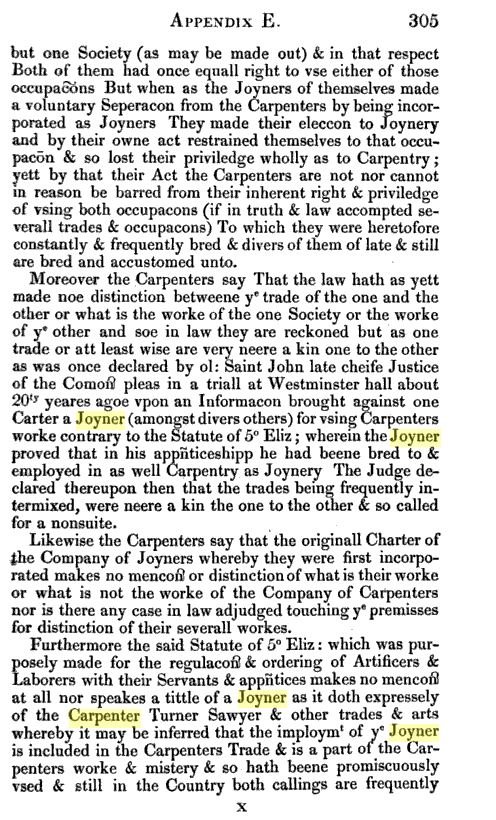Indentures may well be the answer - specialisation and protectionism. But there is more to it than a toolkit, surely - I remember watching some French restorers/builders making a traditional green oak timbered house. They laid it out in their yard, and were using axes, adzes and some very meaty chisels. All joints were pegged M&T, and they left the work out to season a bit before dismantling it and taking it to site for erection. It couldn't have been further from cabinet making. At those extremes would we expect one man to do both kinds of work? Very possibly, my wife and I were discussing this a few evenings ago, looking at the construction of our house (1914) where there is evidence of mouldings and built-in furniture, not to mention sash windows, being partly or wholly made on-site, by the same guys who were constructing the roof and putting in joists and floors. Or maybe the foreman got the creative jobs to do!






